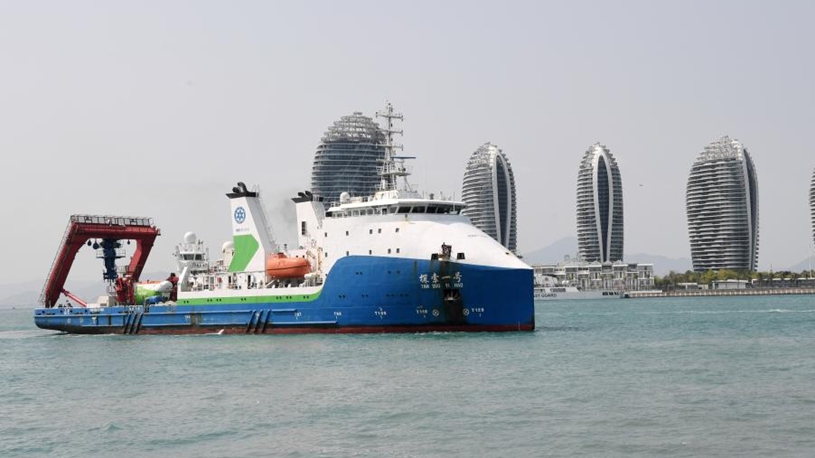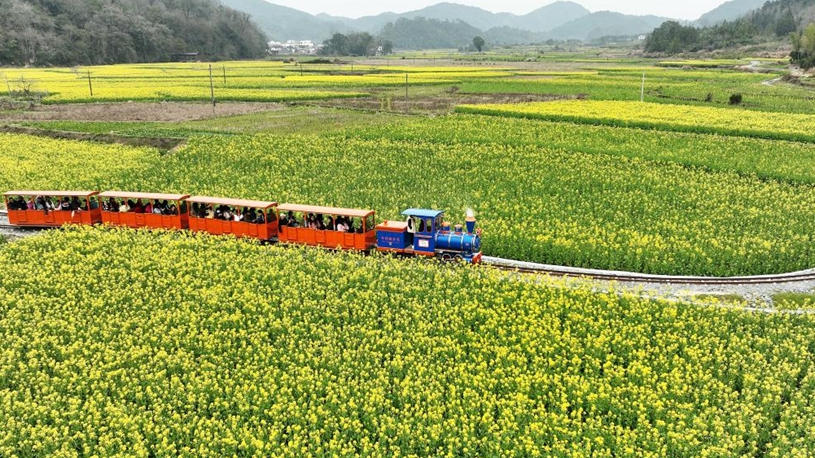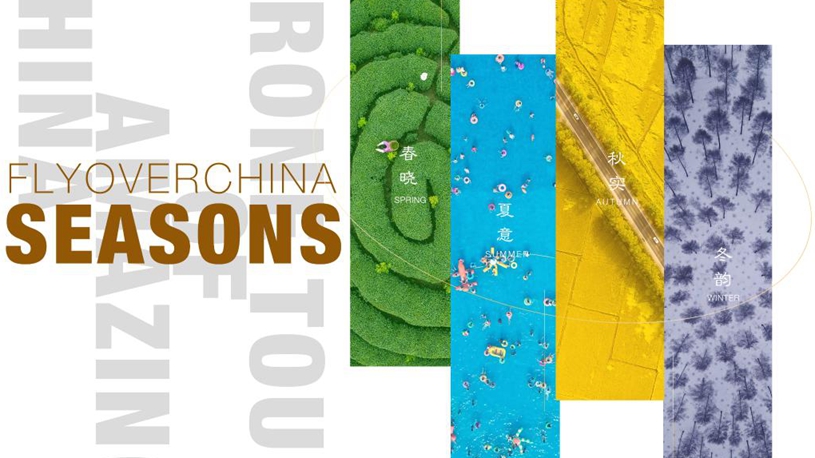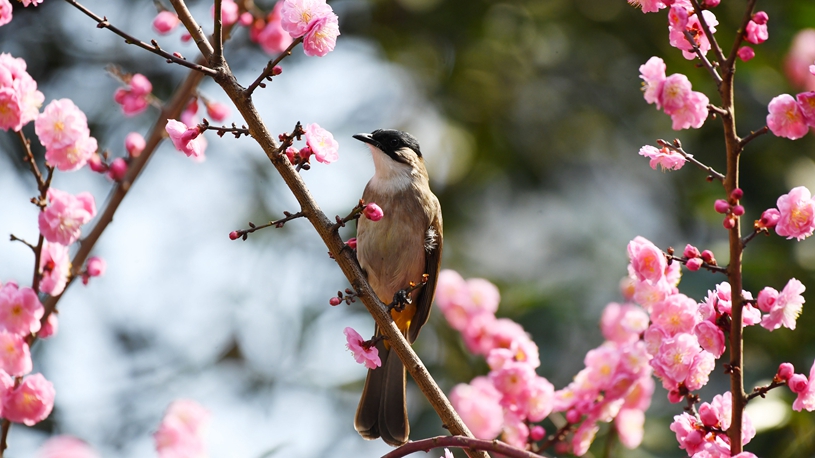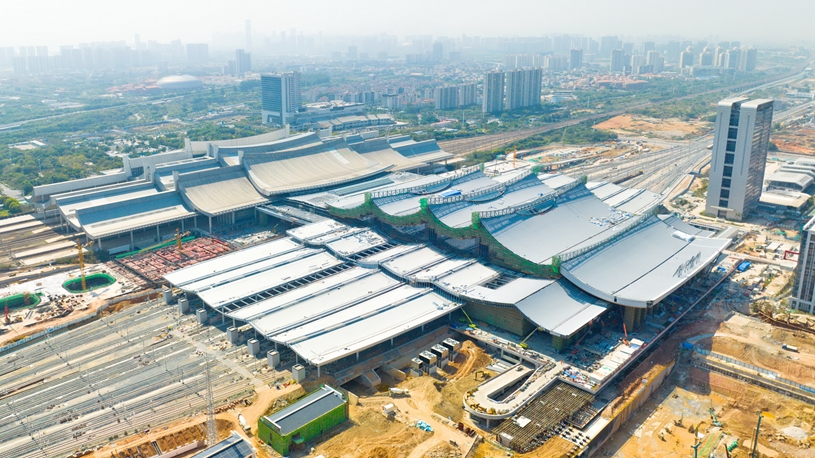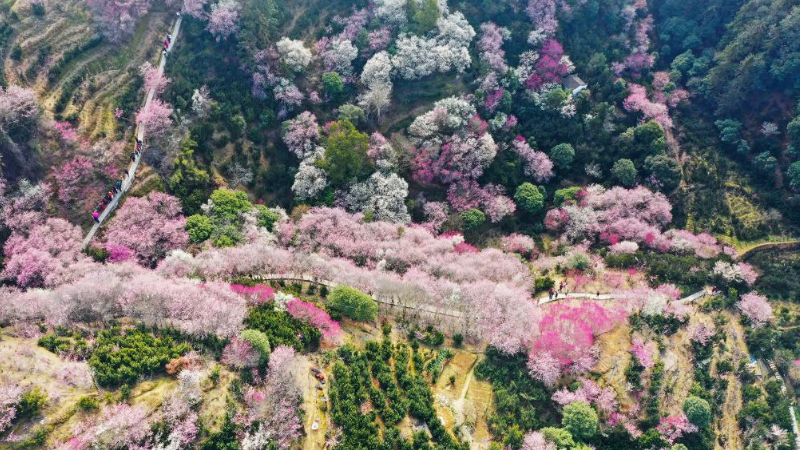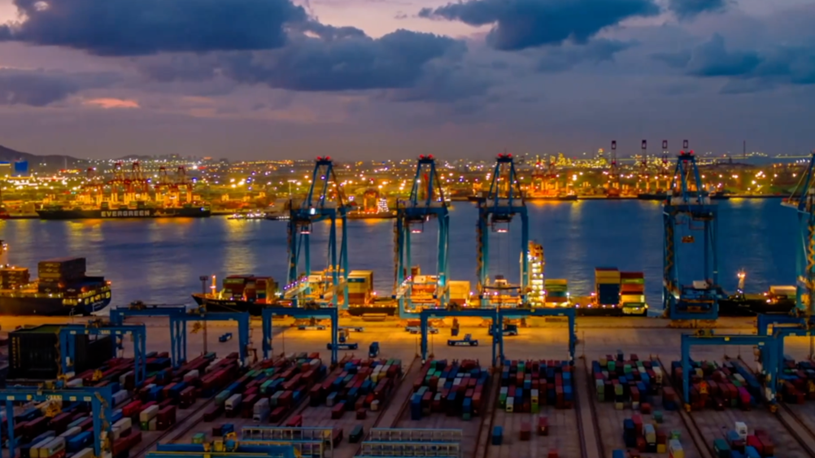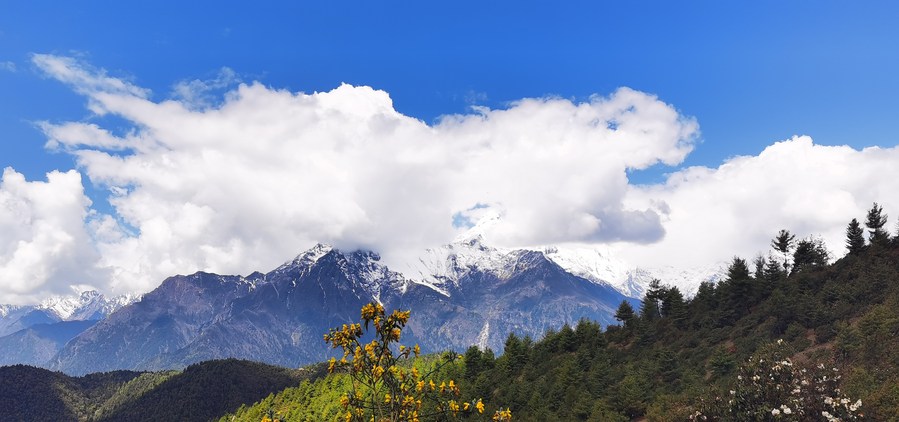
Cellphone photo taken on May 15, 2021 shows the scenery in Gyironggou of Gyirong County, southwest China's Tibet Autonomous Region. (Xinhua/Shen Hongbing)
LHASA, March 14 (Xinhua) -- Chinese researchers have found traces of indica rice at an archaeological site in southwest China's Tibet Autonomous Region, suggesting that the subspecies of rice had spread to the Qinghai-Tibet Plateau around 1,300 years ago.
The discovery was made by a research team from the second comprehensive scientific expedition to the Qinghai-Tibet Plateau.
While cleaning a section at the Kongsangqiao site in Jilung County, in the city of Xigaze, the researchers excavated several pottery shards, some animal bone fragments, and a large number of plant remains.
"We found charred rice grains among the plant remains, which are morphologically closer to the indica subspecies," said Gao Yu, a member of the research team and a researcher at the Institute of Tibetan Plateau Research (ITP) of the Chinese Academy of Sciences.
Meanwhile, the gene sequence of indica rice was also found in ancient DNA extracted at the site, further confirming it was indica rice, the researcher added.
The radiocarbon dating result suggests the grain remains are from the early Tang Dynasty (618-907), said Gao.
There are two main species of rice cultivated in Asia: indica and japonica. Researchers believe that japonica rice was domesticated in the middle and lower reaches of the Yangtze River in China, expanded to northern parts of South Asia about 4,000 years ago, and then crossbred with local proto-indica to form the indica subspecies. The indica rice was later introduced to Southeast Asia and southern China, where it is widely cultivated today.
According to Gao, the research may shed new light on the mystery of when and how indica rice spread into China.
The researcher pointed out that the Kongsangqiao site, located at an altitude of 2,676 meters above sea level, is in an environment that is unsuitable for the heat requirements of indica rice cultivation.
"So the indica rice would have been grown in the lowlands and then brought into the site through trade," Gao added.
Yang Xiaoyan, a professor at Lanzhou University, noted that the Kongsangqiao site is located along the ancient Tubo-Nepal Road, a pivotal route for political, economic and cultural exchanges between the South Asian subcontinent, the Qinghai-Tibet Plateau, and the central plains of China in ancient times.
"Historical documents suggest that the earliest indica rice cultivated in China was introduced from Vietnam. Our research offers a new possibility that by the eighth century, indica rice may have spread to the China via the ancient Tubo-Nepal road," she added.
The research was led by researchers from the ITP, Lanzhou University, the Institute of Archaeology of the Chinese Academy of Social Sciences, the Cultural Relics Conservation Institute of the Tibet Autonomous Region, and other institutes. The research results were published in the journal Science China Earth Sciences. ■

